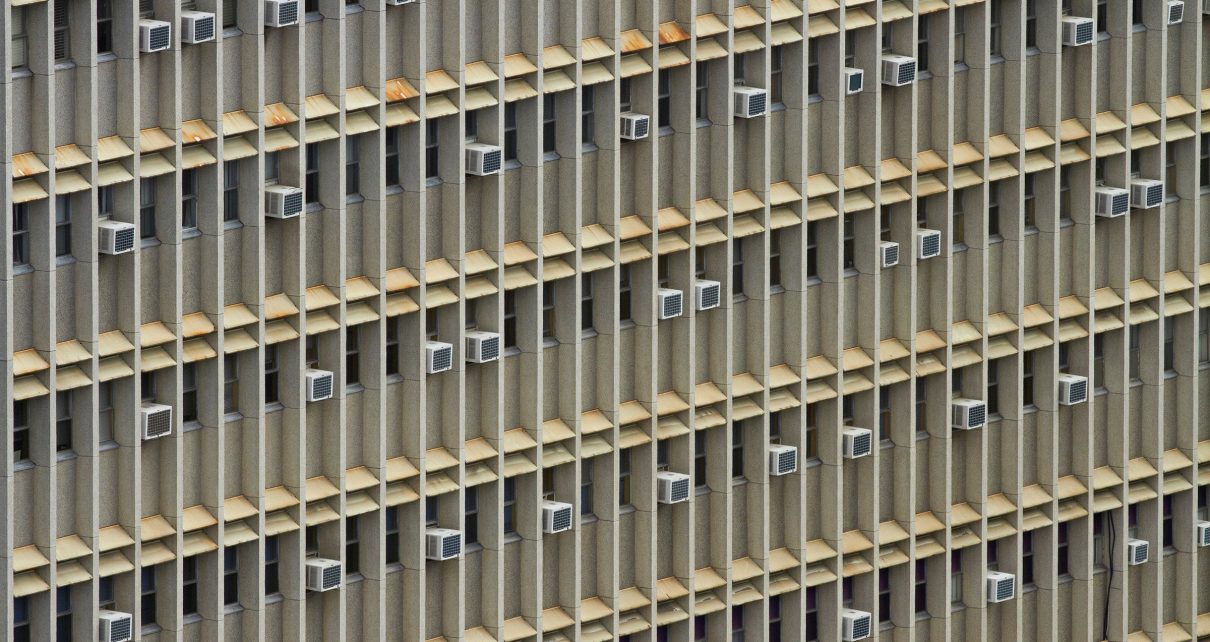Air conditioning and other cooling systems are widely recognized as integral to protecting people from the sometimes deadly impacts of extreme heat, which are intensifying in step with climate change.
Yet according to a study, published yesterday in Nature Sustainability, there remains a “global blind spot” when it comes to handling the already exorbitant demand for cooling and indoor air conditioning, which alone is projected to triple by 2050. That’s a stark reality, the report warns, given that many cooling systems are carbon-intensive—and contribute to global warming themselves.
“Cooling is essential to human well-being and health, from the food we eat to the storage of medicine to how comfortable and productive we are at home, school or the office,” said report co-author Radhika Khosla, a principal investigator at the Oxford Martin Programme on the Future of Cooling.
So if societies do not soon begin implementing sustainable cooling solutions, Khosla added in a statement, they risk “locking the world into a deadly feedback loop, where demand for cooling energy drives further greenhouse gas emissions and results in even more global warming.”
The researchers examined thousands of peer-reviewed papers related to the United Nations’ Sustainable Development Goals and concluded that greener cooling systems could help achieve all 17 goals—which include curbing global hunger, reducing gender inequality and improving human health writ large. That’s possible, the report said, because extreme heat dramatically affects everything from food production to water quality to students’ ability to learn and focus during school.
Despite evidence that demonstrates the connection between efficient cooling systems and improved social and environmental outcomes, however, the authors argue that the “unprecedented rise in demand and the potential benefits of sustainable cooling” remain largely neglected in contemporary sustainability debates. That has major implications, they emphasized, for sustainable development around the world.
To close that gap, the study said technological developments, innovative business models, intentional infrastructure and regulation could be used to make cooling more accessible—and climate friendly.
Cities and towns, for instance, could embed “passive and energy-efficient” cooling mechanisms in urban infrastructure to lessen the impact of extreme heat both indoors and outdoors. That could entail projects intended to reduce the prominence of “urban heat islands” by planting additional trees, developing new parks and building green roofs—all of which naturally cool urban spaces.
Those strategies would be especially useful, the report said, given that “projections of the world’s population living in towns and cities are set to reach 66% by 2050,” making urban areas the “epicentre of cooling demand.”
The authors also suggest that air-conditioning companies adopt a “cooling as a service” business model, intended to making sustainable cooling more affordable—especially in hot, low-income regions. Rather than charging for the system itself, the companies would profit by retaining ownership of it and charging customers to operate the system and maintain a comfortable thermal environment. This would drive down, or even eliminate, what can be prohibitive upfront costs for cash-strapped households.
In the context of a world “positioned at the brink of unprecedented cooling demand,” the report says, these interventions are among the many that offer “a way forward while being acutely aware of the extraordinary opportunity the current moment provides to use cooling as a lens to look to the sustainability of our future.”
Reprinted from Climatewire with permission from E&E News. E&E provides daily coverage of essential energy and environmental news at www.eenews.net.



